Physical Address
304 North Cardinal St.
Dorchester Center, MA 02124
Physical Address
304 North Cardinal St.
Dorchester Center, MA 02124
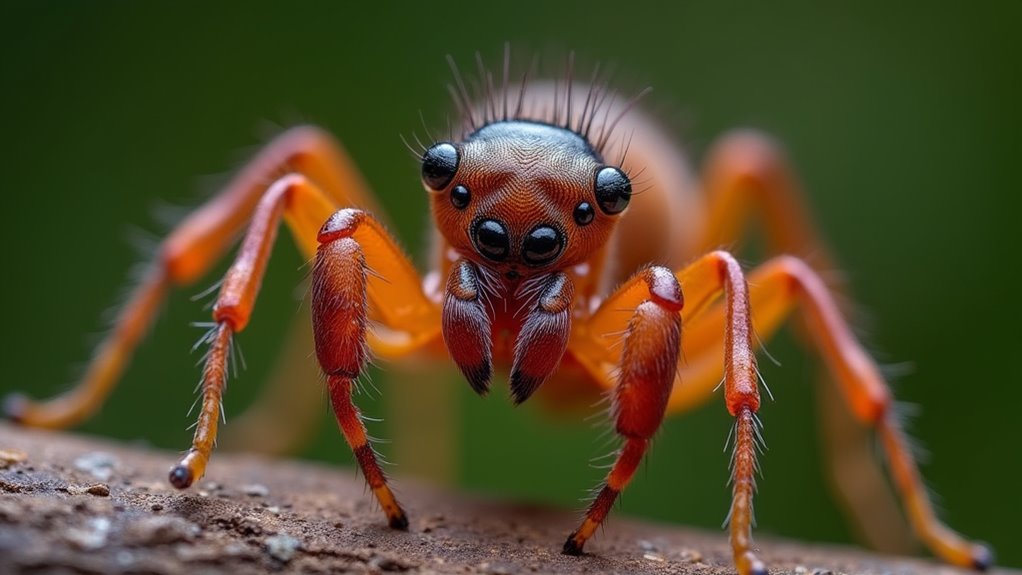
Of all earth's deadly creatures, these 14 venomous insects deliver everything from excruciating pain to fatal consequences.
The world’s most venomous insects include the Asian Giant Hornet, whose venom can cause organ failure, and the Bullet Ant, delivering 12-24 hours of excruciating pain. You’ll also find Africanized “Killer” Bees, Harvester Ants (with venom 20x more toxic than bees), Tarantula Hawks, Red Fire Ants, Assassin Bugs, and Paper Wasps. These creatures use their venom for hunting or defense, with effects ranging from intense pain to potential fatality. Discover which species pack the deadliest punch below.
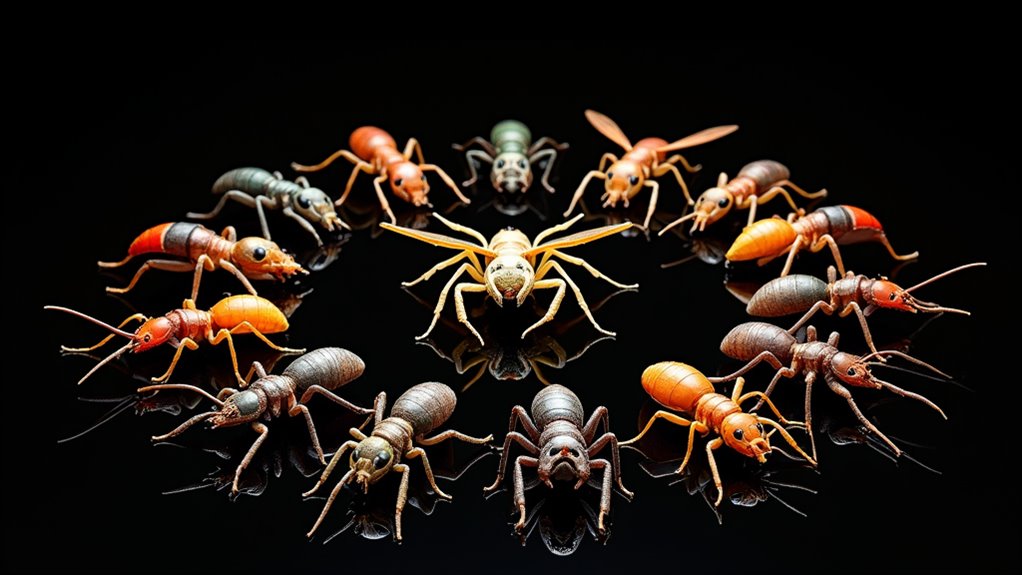
While many insects may seem harmless, some pack a powerful venomous punch that can cause excruciating pain or even death. You’ll find these dangerous creatures across different regions worldwide, each with unique venom compositions and delivery methods.
The Bullet Ant, native to Central and South American rainforests, inflicts the most painful sting of any insect. You might encounter the Cow Killer Wasp with its excruciating sting or Red Imported Fire Ants that can trigger severe allergic reactions. The Oriental Wasp delivers a massive venom payload that researchers believe exceeds that of any other venomous animal on earth.
The Japanese Red Ant and Assassin Caterpillar also deliver intensely painful venom.
Though not traditionally venomous, disease-transmitting insects like mosquitoes, tsetse flies, and kissing bugs pose significant threats. Their bites can introduce deadly pathogens that cause malaria, trypanosomiasis, and Chagas disease.
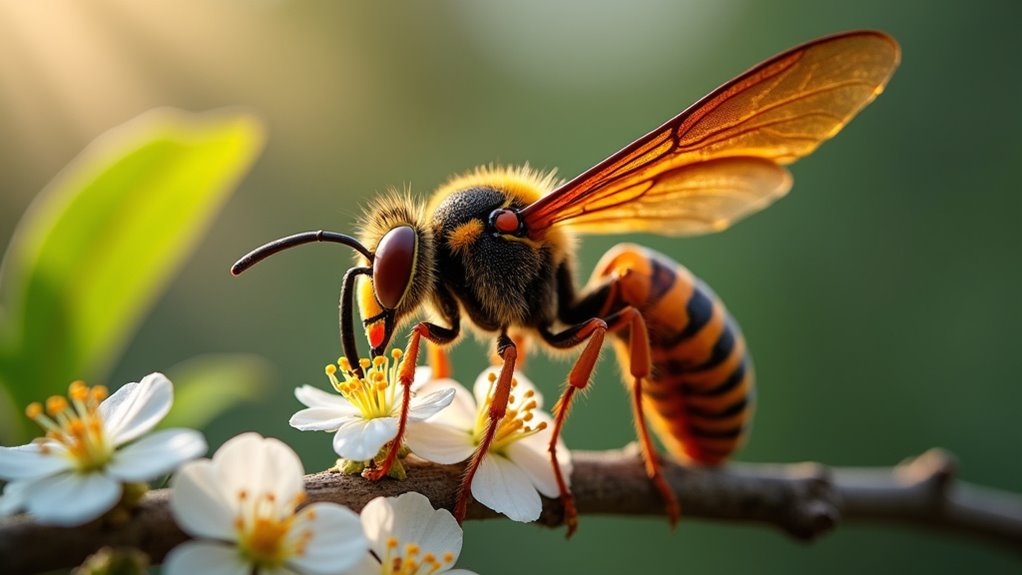
Known for its intimidating size and potentially lethal sting, the Asian giant hornet earns its nickname “murder hornet” through sheer power and venom potency. Native to Eastern Asia, particularly Japan and China, these massive wasps can exceed 50mm in length, making them the world’s largest wasp species.
Unlike honeybees, they can sting repeatedly, injecting neurotoxins that damage kidneys, liver, and heart tissue. Their venom contains mandaratoxin, histamine, and other compounds that cause severe pain and organ failure. These hornets possess a 6 mm long stinger capable of penetrating standard beekeeper suits.
In 2013 alone, they caused 42 deaths in Shaanxi Province, China.
If you’re in affected regions, seek immediate medical attention if stung. Treatment includes removing stingers and administering methylprednisolone.
Your best protection is avoiding nests and using proper protective gear outdoors.
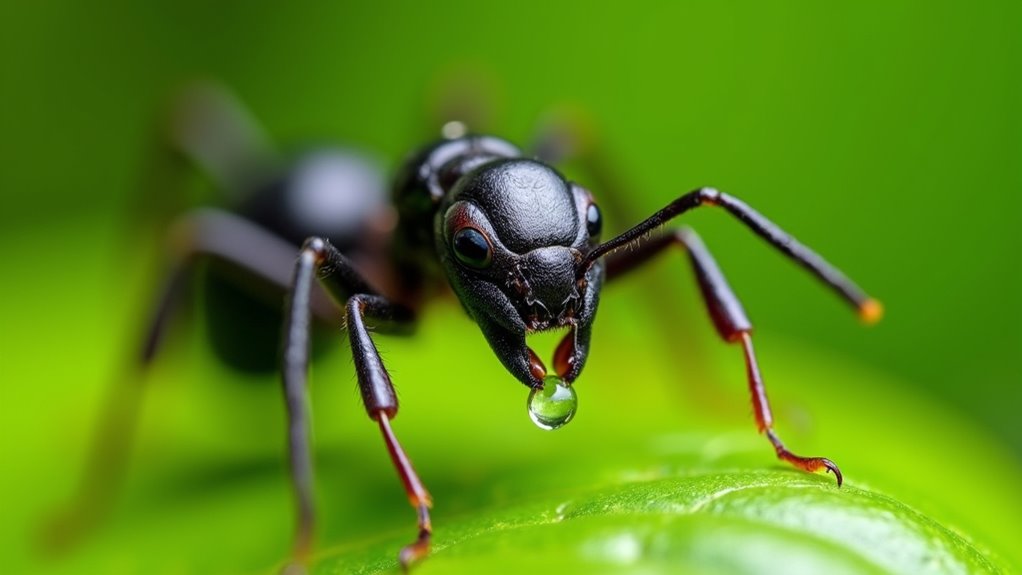
Native to the rainforests of Central and South America, these ants deliver pain that persists for 12-24 hours, often accompanied by fever, cold sweats, nausea, and vomiting.
The culprit behind this misery is poneratoxin, a neurotoxin that disrupts nerve cell function. Poneratoxin binds to voltage-gated sodium channels, forcing them to remain open and preventing normal inactivation, which leads to the intense pain sensation.
Scientists aren’t just studying bullet ant venom for curiosity’s sake—it shows promise as a bioinsecticide and may lead to breakthroughs in pain management therapies.
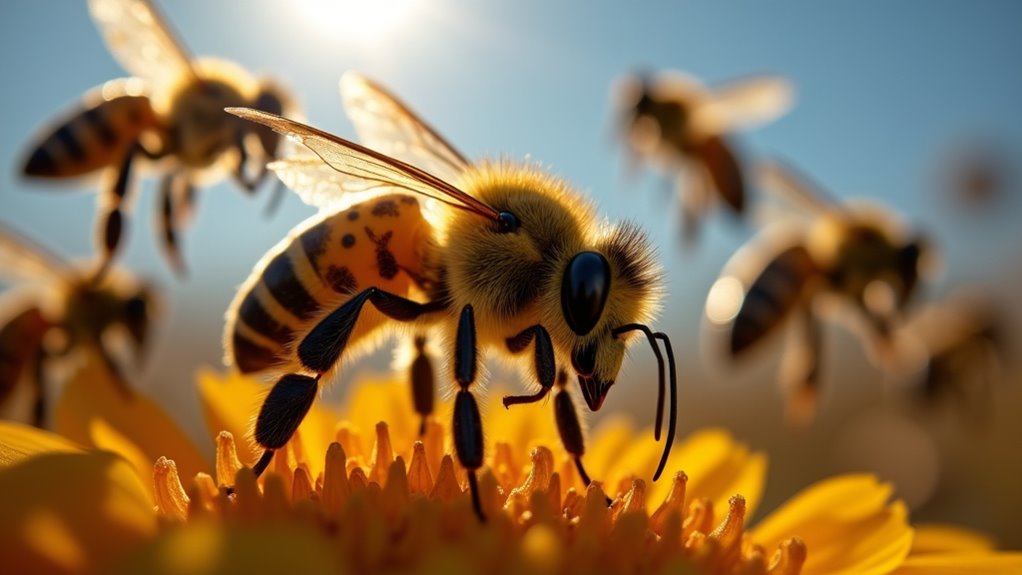
Feared across the Americas for their extraordinary aggression, Africanized honey bees have earned the nickname “killer bees” due to their tendency to attack in massive, relentless swarms. Unlike their European counterparts, these bees are easily triggered by vibrations or sudden movements, pursuing perceived threats for longer distances.
Africanized bees attack relentlessly in massive swarms, pursuing threats far longer than their European relatives.
Though their venom (94 μg per bee) contains less melittin than European bees, it’s the sheer number of stings that makes them deadly. Approximately 500 simultaneous stings can cause death from direct toxicity, while even a single sting can trigger fatal anaphylaxis in sensitive individuals. Expanding at a rate of 300-500 km annually, these invasive bees continue to spread throughout the Americas.
Over 400 documented fatalities have occurred from these attacks.
If you encounter a swarm, run away quickly in a straight line and seek shelter immediately.
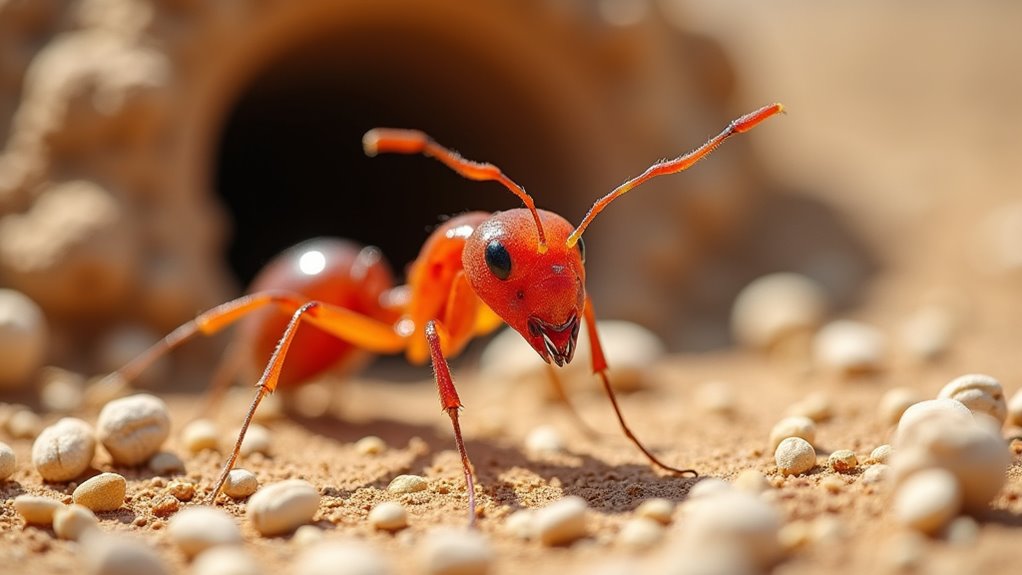
Among the fiercest invertebrates inhabiting arid environments, harvester ants possess venom that ranks as the most potent in the insect world. When you encounter Pogonomyrmex maricopa, you’re facing a creature with venom 20 times more toxic than a honey bee’s and 35 times more powerful than a rattlesnake’s. Only female harvester ants have the ability to sting, while males possess merely pseudostingers formed by hardened genitalia.
Their sting causes progressive pain that can last 4-12 hours, unlike the localized discomfort from bee stings.
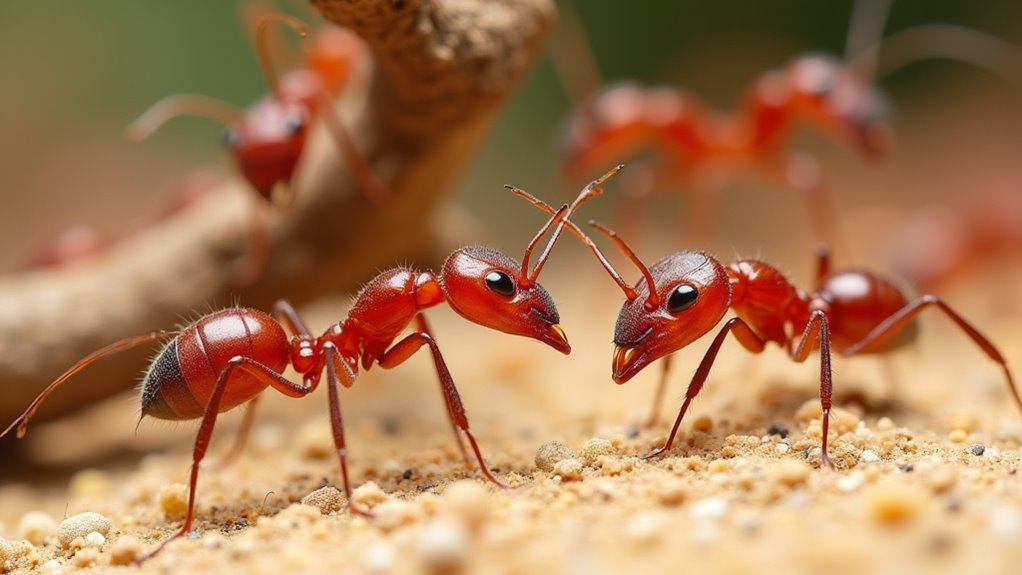
While harvester ants deliver the most potent venom in the insect world, fire ants create a much more widespread impact due to their sheer numbers and aggressive behavior. If you’ve encountered these invasive pests, you’ll recognize their signature burning sting—caused by solenopsins, alkaloids that make up 95% of their venom.
Each year, fire ants sting approximately 14 million Americans, injecting venom that typically causes localized pustules but can trigger life-threatening anaphylaxis in sensitive individuals. Their venom serves multiple purposes: defense, prey capture, and colony-wide antimicrobial protection through trophallaxis. The sting itself ranks only 1 on the Schmidt sting pain index, described as sharp and sudden but less intense than many other venomous insects.
Young workers rapidly synthesize venom, which acts as both external weapon and internal antibiotic. These adaptable insects thrive in disturbed environments, causing ecological damage and costing millions in control efforts.

Tarantula hawks earn their fearsome reputation as possessors of one of the most excruciating stings in the insect world. Despite causing intense pain, their venom has relatively low mammalian toxicity compared to other insects like honeybees.
These solitary wasps use their impressive 12mm stingers to paralyze tarantulas, which become living food sources for their developing larvae. These wasps often form mixed-species aggregations that likely serve a defensive purpose in their natural habitats.
Armed with formidable stingers, these wasps transform immobilized tarantulas into living larders for their hungry offspring.
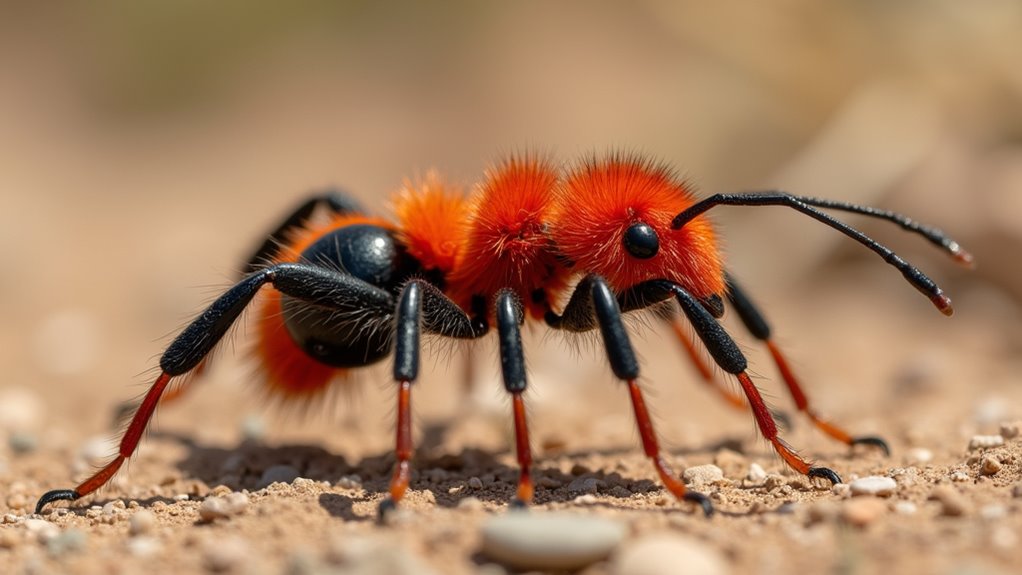
Cow killer wasps, despite their misleading name, aren’t actually ants but wingless female wasps of the Dasymutilla occidentalis species. Their striking red and black coloration serves as a warning to potential predators—and for good reason. Their sting can cause intense pain lasting up to 30 minutes, earning them their dramatic nickname.
You’ll find these solitary creatures throughout North America, particularly during summer months. Both sexes can produce squeaking sounds by rubbing their abdominal segments together as an additional warning to predators. Despite their fearsome reputation, they’re not aggressive and only sting when threatened.
At 15-25mm in length, these hairy hymenopterans play an important ecological role as parasitoids, laying eggs in the nests of other insects to control their populations. While their sting ranks high on the Schmidt pain index, their venom is actually less toxic than honey bees or harvester ants.
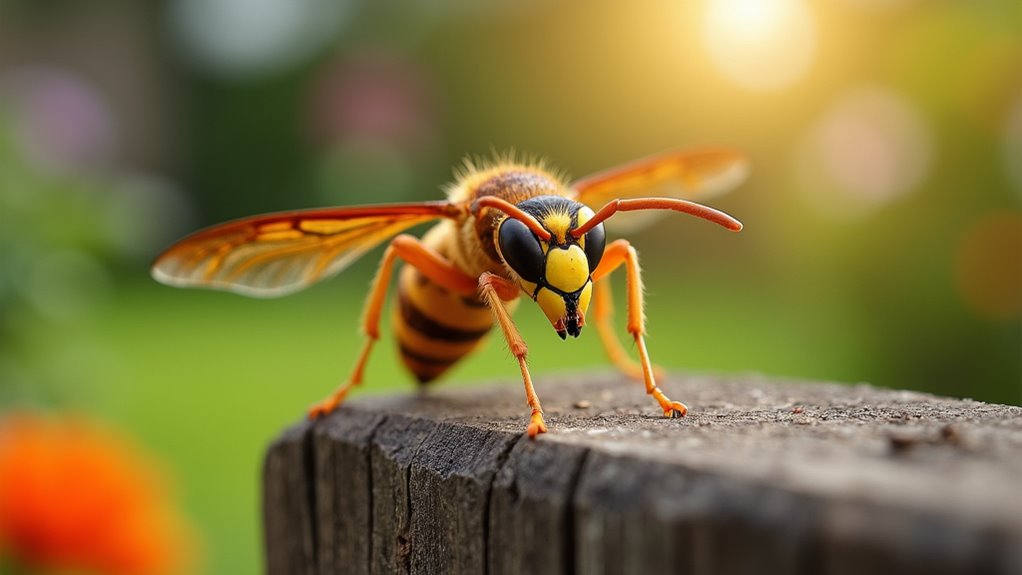
Paper wasps, recognized by their slender bodies and distinctive open-celled nests, represent one of the most common venomous threats in residential areas. Though less aggressive than hornets, they’ll readily attack when their nest is threatened. Their venom contains potent proteins and peptides that cause immediate pain, inflammation, and potential allergic reactions. For allergic individuals, these stings can be life-threatening, requiring venom immunotherapy which has proven highly effective with success rates reaching 98%.
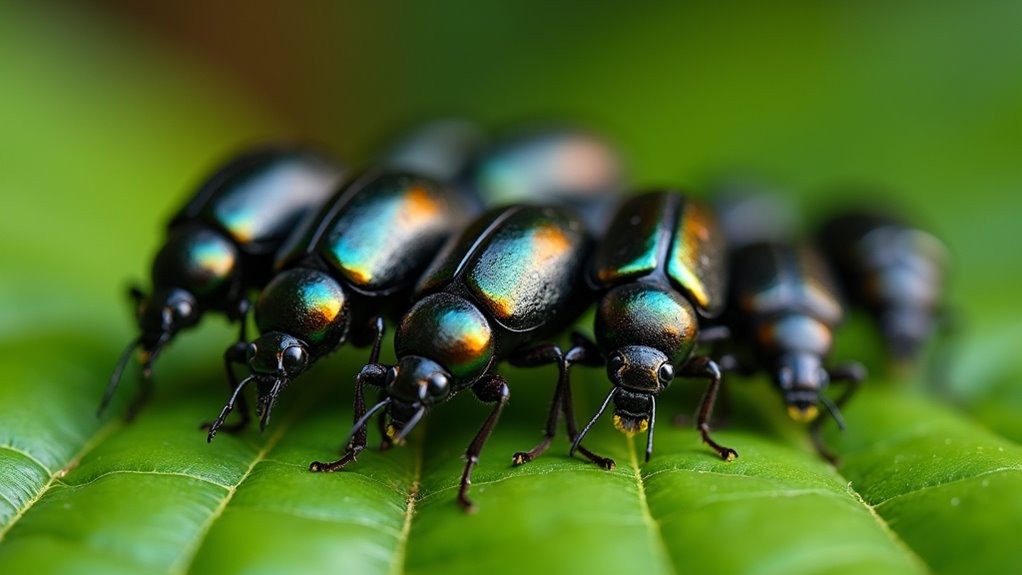
Unlike wasps that inject venom through stings, blister beetles deliver their toxicity through direct contact with your skin. These insects contain cantharidin, a potent toxin produced in male beetles’ reproductive systems that causes painful blisters upon contact.
Don’t be fooled—blister beetles don’t bite or sting. The damage occurs when you crush or rub them against your skin, releasing the toxin.
Cantharidin can also irritate mucous membranes, potentially causing serious eye injuries if exposure occurs. Historically, these beetles were ground into a powder called Spanish fly for various medicinal applications.
These beetles pose a particularly dangerous threat to horses and livestock that might accidentally ingest them in hay or feed. For animals, the consequences can be fatal, causing severe intestinal damage and kidney failure.
If you find blister beetles in your garden or fields, avoid crushing them and carefully monitor livestock feed.
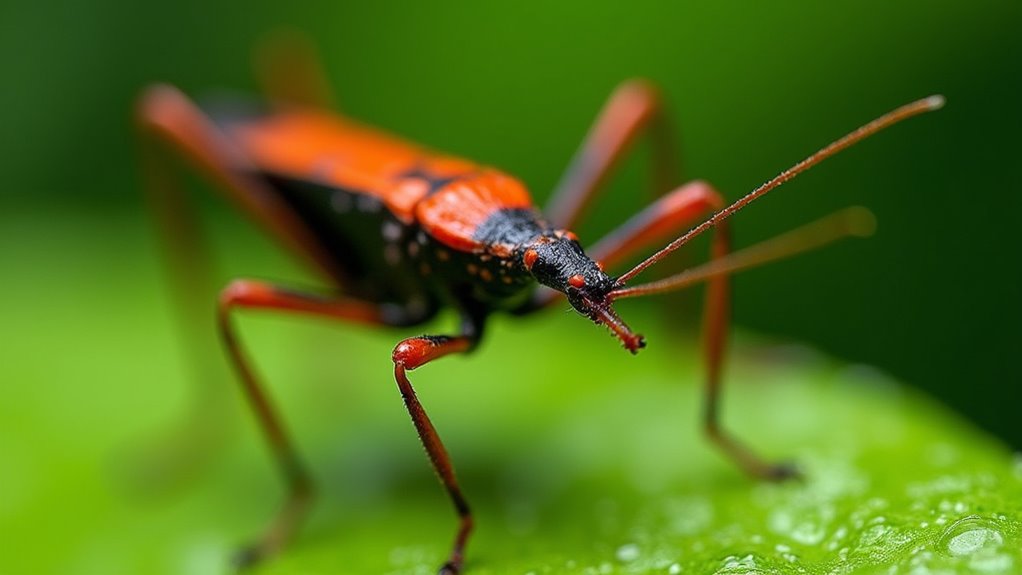
Lurking in gardens and forests worldwide, assassin bugs combine stealth with a lethal biochemical arsenal that makes them formidable predators. These insects inject a potent cocktail of toxins through their rostrum (beak) that paralyzes prey and liquefies their internal tissues for easy consumption. When threatened, they can release defensive venoms in response to various stress stimuli including physical harassment or cold exposure.
Nature’s tiny assassins silently stalk their prey, armed with toxic chemistry that turns victims to soup from the inside out.
You’ll find their venom contains neurotoxic peptides, cytolytic compounds, and digestive enzymes that work together to immobilize and pre-digest victims.
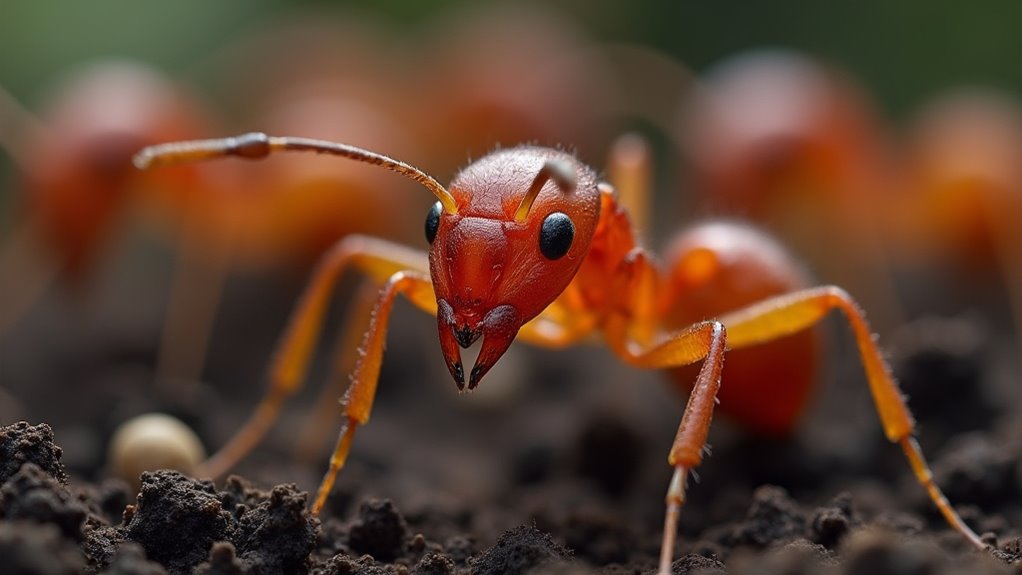
Originally native to South America, the red imported fire ant (Solenopsis invicta) has become one of the world’s most notorious invasive species with a painful punch that exceeds its tiny size. These small but aggressive ants deliver a potent venom that’s mostly alkaloid-based, causing burning pain and pustules where they’ve stung you.
While the venom is primarily used for defense and prey capture, it’s the protein allergens (Sol i 1-4) that trigger severe allergic reactions in sensitive individuals. Each year, an estimated 14 million Americans experience these painful stings. Approximately one-third of populations in infested areas are stung annually, with RIFA typically delivering multiple stings before being removed.
Though only 2-6mm in size, fire ants can overwhelm larger animals with coordinated attacks. Their ecological impact is substantial, as their colonies displace native species and damage agricultural systems wherever they invade.
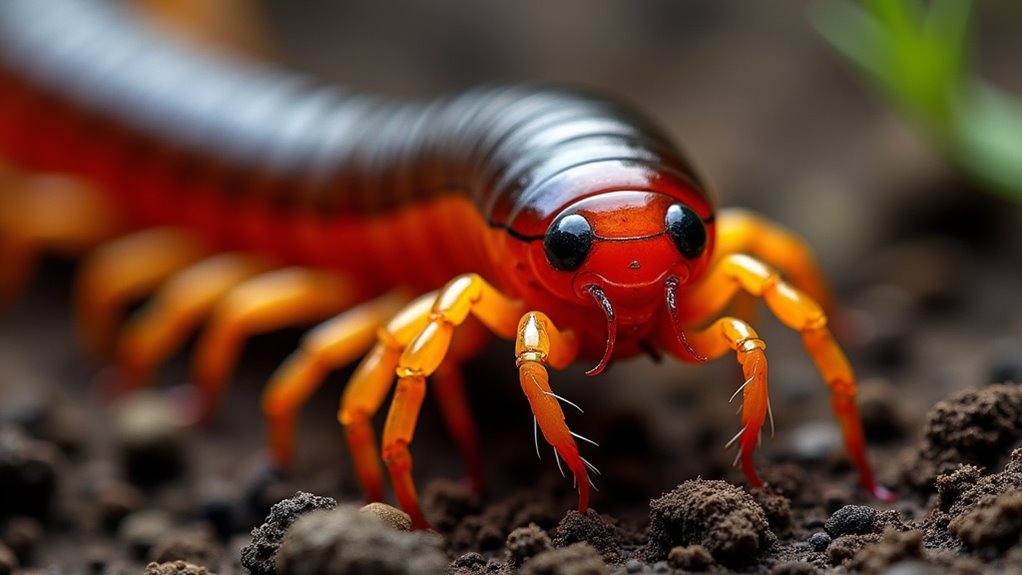
Among the world’s most formidable venomous arthropods, giant centipedes possess an arsenal of toxic tools that make them efficient predators despite their primitive appearance. Their venom is incredibly complex, containing a diverse cocktail of proteins, peptides, and other bioactive molecules that target your nervous system. The Chinese red-headed centipede’s venom contains a particularly lethal component called Spooky Toxin that interferes with potassium channels in nerve cells.
When a centipede strikes, you’ll experience intense burning pain, swelling, and potentially serious systemic effects. These creatures can kill prey 15 times their size, demonstrating their venom’s potency.
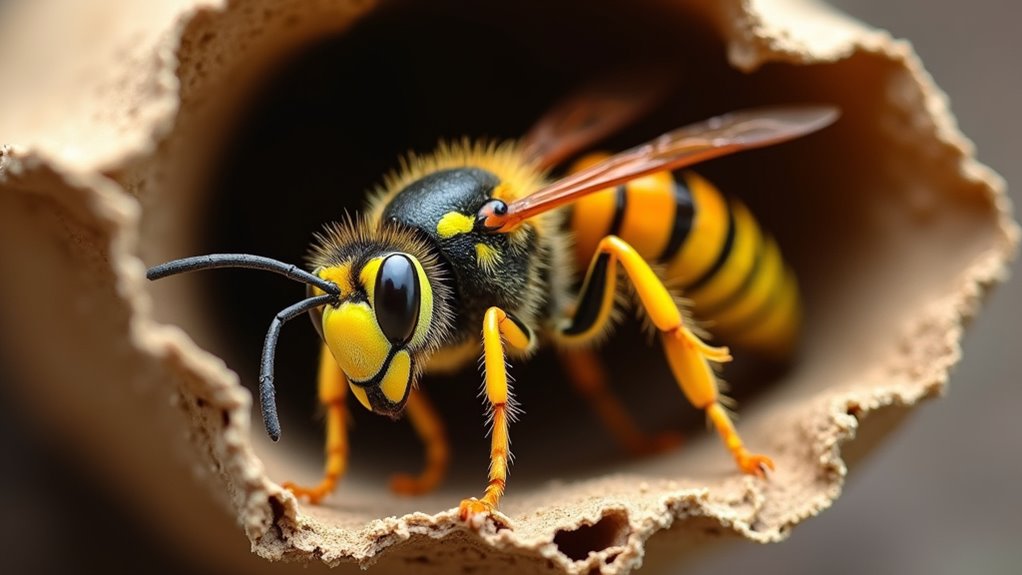
While giant centipedes attack with venomous fangs, yellow jackets present an equally formidable threat through their aerial assaults and multiple stinging capability. Unlike honeybees, these colonial insects can sting repeatedly, injecting venom that contains histamine, serotonin, and acetylcholine—a painful cocktail that causes inflammation and severe discomfort.
You’ll typically encounter yellow jackets defending their underground nests with remarkable aggression. The most dangerous aspect isn’t the individual sting but the potential for multiple attacks when their colony feels threatened. These wasps become increasingly active and territorial during late summer and early fall, when encounters with humans are most common.
For most people, stings cause localized pain and swelling, but those with allergies may experience life-threatening anaphylaxis requiring immediate medical attention. Despite their fearsome reputation, yellow jackets serve an important ecological role by controlling pest populations and contributing to pollination.
You’ve now explored the most dangerous venomous insects on earth, from the Asian Giant Hornet to aggressive Yellow Jackets. Did you know that the Asian Giant Hornet alone kills approximately 30-50 people annually in Japan? When encountering these creatures, remain calm and slowly back away. Most won’t attack unless provoked, but it’s vital to seek immediate medical attention if stung, as reactions can escalate quickly.